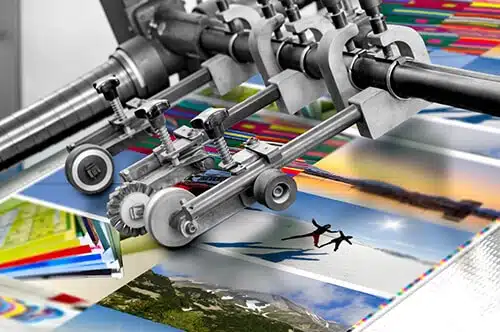Printing process commonly used for books
With the development of digital technology, the emergence of online publishing and e-books, some people’s reading habits have changed, but many people still retain the reading habits of paper books. Paper books are real objects, and those who can see and touch The unique book binding design and printing process give everyone a real touch, which is the charm of paper books.
Hot stamping process:
The hot stamping process uses the principle of heat transfer to transfer the aluminum layer in the anodized aluminum to the surface of the substrate to form a special metal effect. Because the main material used for hot stamping is anodized aluminum foil, hot stamping is also called anodized aluminum hot stamping. The metallic luster of hot stamping has a strong decorative effect and a strong visual impact.
Laser stamping:
Laser hot stamping is a process of transferring the laser pattern on the anodized aluminum to the substrate by using the effect of temperature and pressure. The feature of the laser hot stamping process is that the brush can show different colors with the change of the viewing angle, with obvious dynamic color changing effect, and can produce a rainbow ring effect under the spotlight.
Laminating process
Lamination is also called laminating. The lamination process has strong protection, which can protect the printed color from scratches and enhance the toughness of the printed product. The surface of the book cover after lamination is smooth and bright. According to different film materials, it can be divided into glossy film, matte film, pearlescent film and tactile film.
Die cutting process
Usually the die-cutting process is a technology that combines the die-cutting knife and the crimping knife in the same template to hollow out the shape of the material. Root die-cutting makes all kinds of printed packaging appear in three-dimensional and curved lines, and the various shapes and shapes created are more beautiful, delicate and full of creativity.
Local UVs:
The UV process is to use UV ink to cover the surface of the printed matter to produce different light effects, which are widely used in book design and production. The UV process makes the printed matter partially present higher brightness, transparency and wear resistance. The surface of the printed matter after partial UV treatment is more textured and three-dimensional, highlighting the visual effect of local light.




